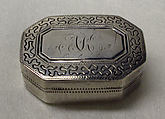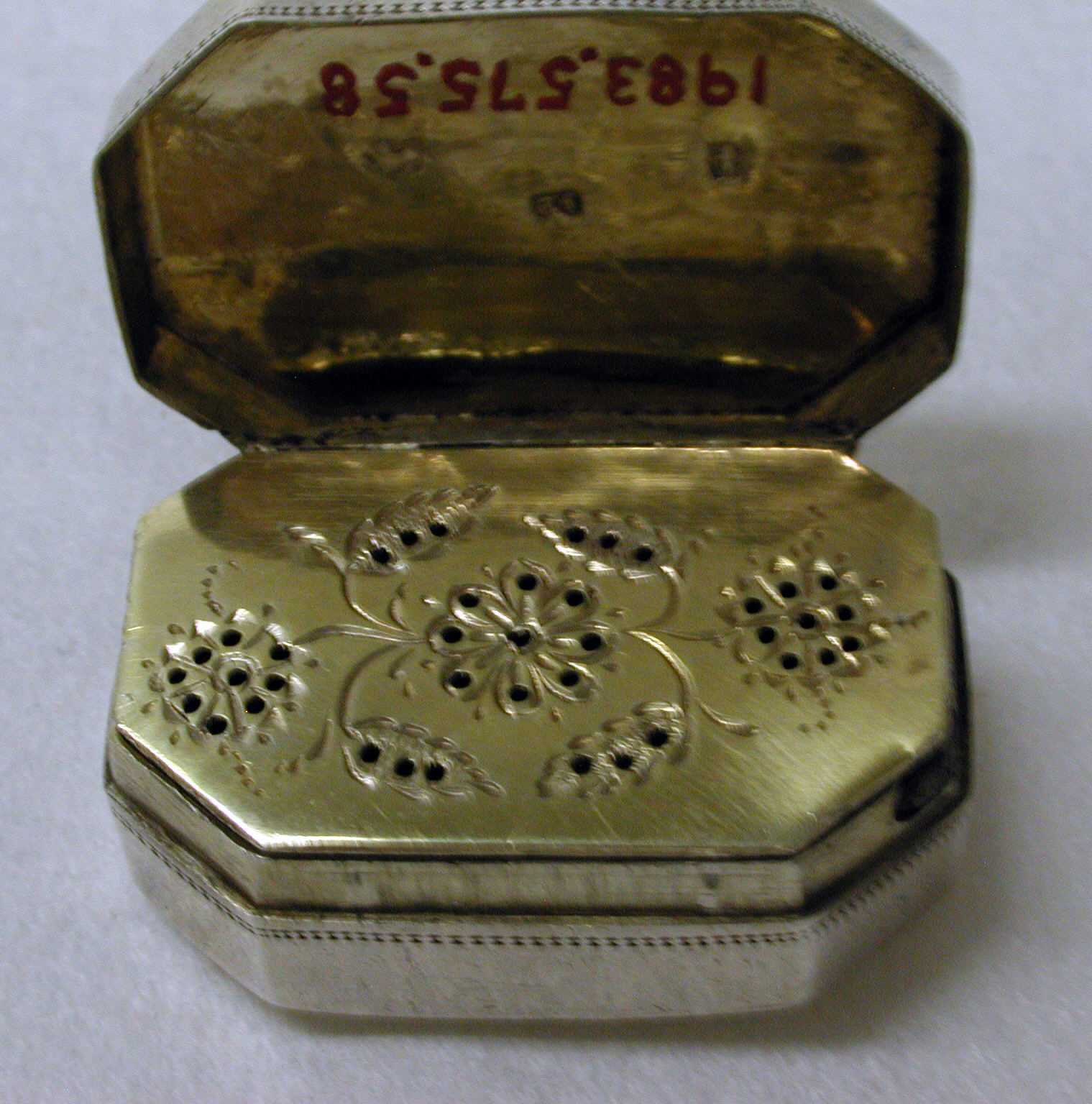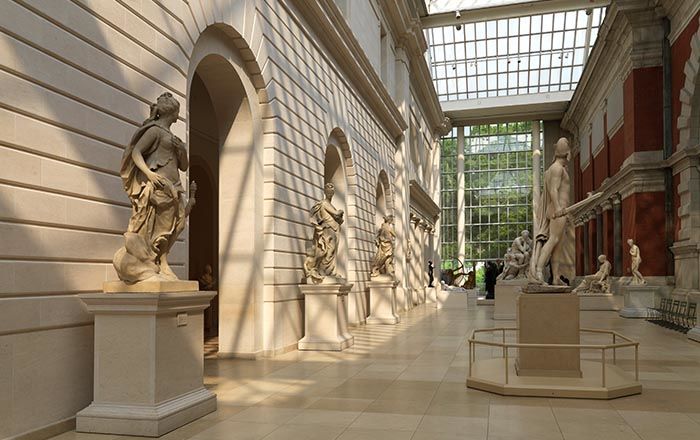Vinaigrette
Probably by Samuel Pemberton
Not on view
The partially struck maker’s mark found on the box may be the one used by Samuel Pemberton. At least three generations of Samuel Pembertons worked as jewelers and silversmiths in Birmingham in the 18th and 19th centuries, either fathers and sons or extended family. The second lived from 1738 to 1804, and the third from 1771 to 1836: either of these may have made this vinaigrette.(The second Samuel Pemberton was one of the main toymakers mounting jasper intaglios for Josiah Wedgwood and Thomas Bentley.)
From the mid-1770s until at least the 1820s, the Samuel Pemberton workshops were on Snow Hill, the heart of the jewelry and toy-making district. Bright-cut foliate engraving and wrigglework typified much of their boxes and vinaigrettes as seen here, while the grill is dot-punched and elaborated into floral designs.
A vinaigrette was intended to hold a tiny sponge dipped in aromatic vinegar. Its interior is gilded to protect the silver from oxidation caused by the acidity of the vinegar. A hinged and decoratively pierced inner lid or grill kept the sponge in place while its perforations allowed the odor to waft through. A whiff of the vinegar might revive someone from a fainting spell. Such vinaigrettes were worn around the neck, on a chatelaine suspended from the waist, or carried in a pocket. Frequently, the decoration left a reserve for the addition of initials or a name to personalize. Here, the initials AK likely indicate the original owner.
This image cannot be enlarged, viewed at full screen, or downloaded.
This artwork is meant to be viewed from right to left. Scroll left to view more.



